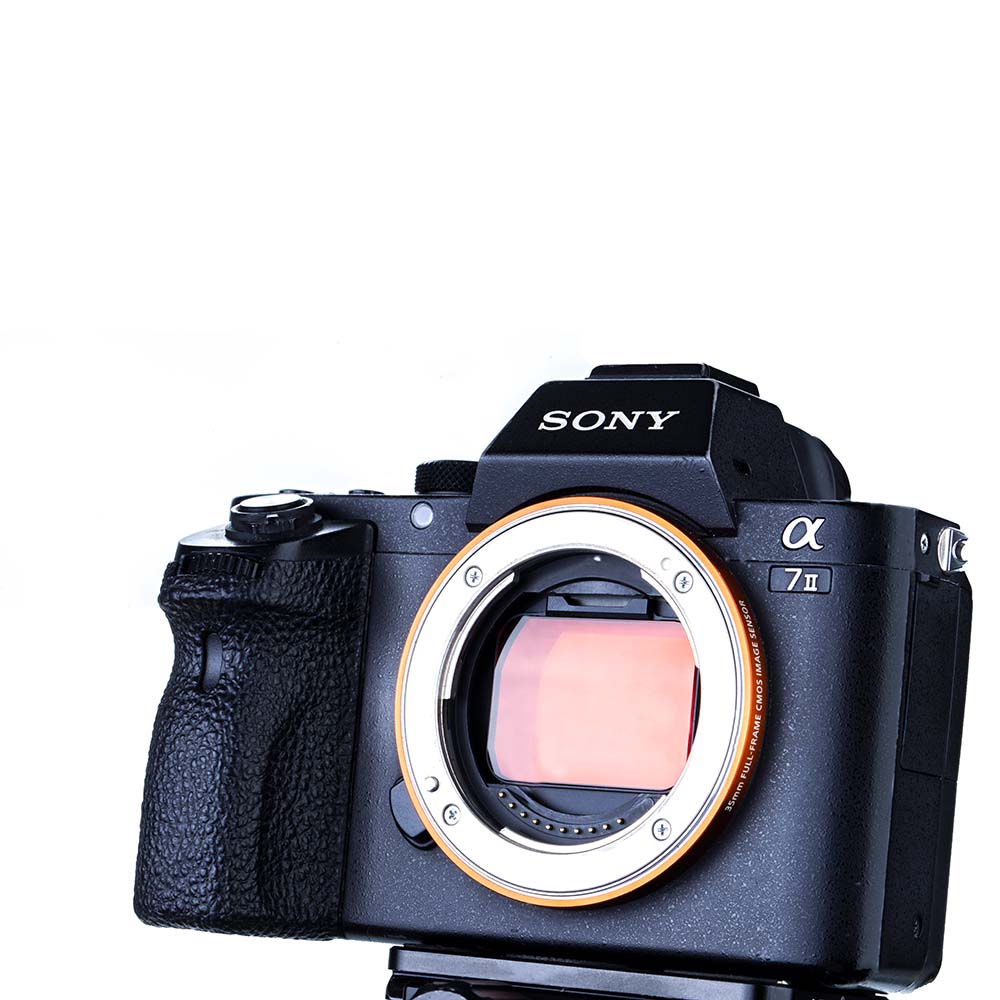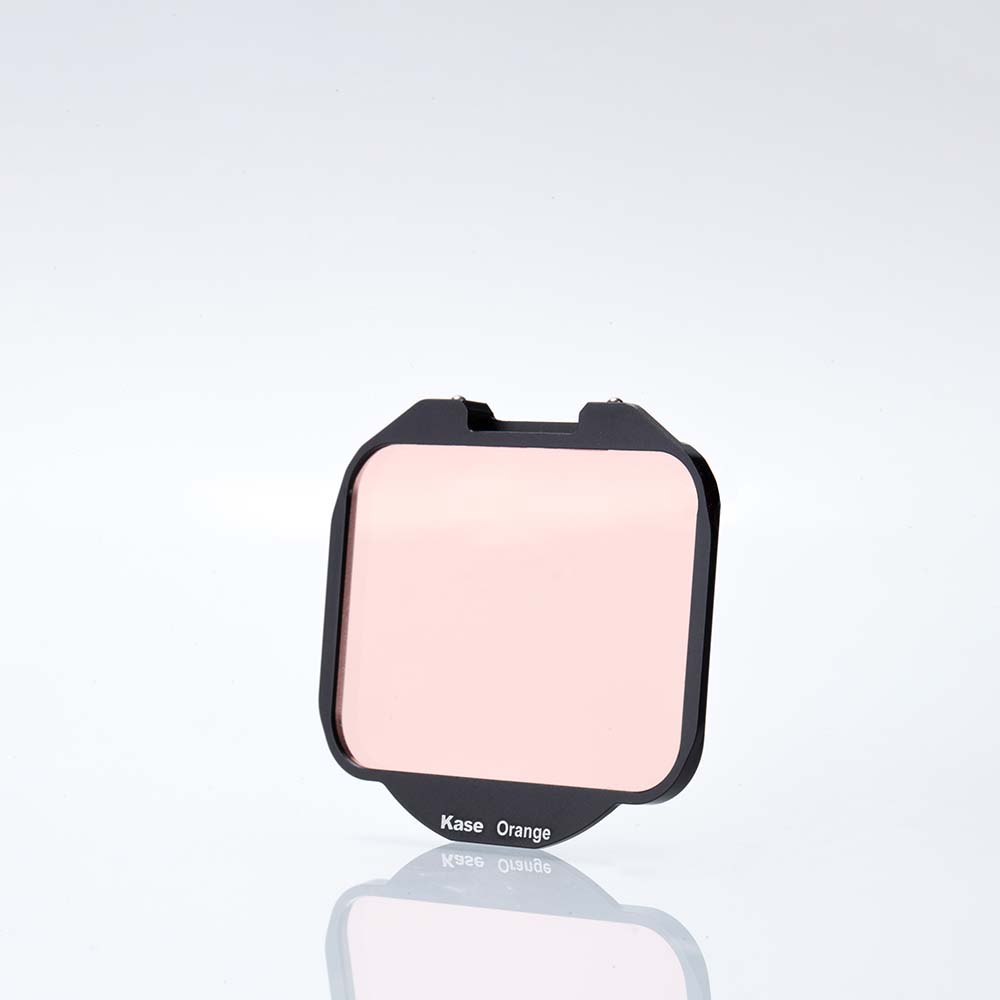Red light filter from Kase - Filter for underwater photography
The most common underwater filter is the red light filter. This is a useful tool for underwater photography to achieve excellent quality. You do not add red light to the images, but the red filter increases the amount of red light in the underwater images. Green and blue tones are blocked by the filter and thus the colors are corrected. As a result, the red comes out better in the photographs. The material of the red filter is dyed plastic, glass or plastic.
Water has a greater density, which is the reason why everything looks different under water than above it. When light rays hit the water surface, it is reflected. As a result, little light gets underwater. In addition, the little light slows down under water. The reason for this is the water density. It is said that up to a depth of 5 meters, the loss of light is small and the deteriorating color can be compensated by a camera. The best time for underwater photography is at noon, because the sun is in a vertical position.
With the application of the filter, the exposure becomes worse and decreases by up to 1.5 f-stops. Only at depths (5 meters or more) does it make sense to use the red filter. Before that, the red in the photographs would look too intense and unnatural. However, the filter cannot be used from a water depth of 15 meters. The proportion of red light is too drastically reduced. The result would be dark pictures. Other colors also fade in images with depth. Orange colors with a wavelength of about 650mm disappear from a depth of 10 meters, yellow and green tones at 20 meters. Finally, at a depth of 30 meters, blue light with a wavelength of about 450mm is also no longer visible. The clip in filters for underwater photography are available from Kase in red, orange and violet.
The specifications mentioned are approximate values. Depending on the manufacturer or the general conditions, the use of the underwater filter can vary.
More about camera filters for underwater photography
What is a red light filter and why is it used in underwater photography?
The most common underwater filter is the red light filter. This is a useful tool for underwater recordings to achieve excellent quality. They do not add red light to the recordings, but the red filter increases the proportion of red light in the underwater recordings. Green and blue tones are blocked by the filter and the colors are corrected. This makes the red stand out better in the photos. The material of the red filter consists of colored plastic, glass, or plastic.
Magenta vs red lens filters: which is better for underwater photography?
Which filter should be used depends on the water depth and the local conditions. A distinction is made between the magenta filter and the red filter. Depending on the body of water you are in, a different filter is required.
- In lakes or rivers, the water has a green tint. Thus, the magenta filter is the more suitable one here.
- In the sea, the water is more bluish, so a red light filter should be used here.
- In fresh or salt water, a purple underwater filter is required from a depth of 5 to 21 meters.
Why does underwater photography require a special camera filter?
With the application of the filter, the exposure deteriorates and drops by up to 1.5 f-stops. The use of the red filter only makes sense in the depths (from 5 meters). Before that, the red on the photos would look too intense and unnatural. However, the filter can no longer be used in water deeper than 15 meters. The proportion of red light is too drastically reduced. The result would be dark images. Other colors also fade with depth in images. Orange colors with a wavelength of about 650mm disappear from a depth of 10 meters, yellow and green tones at 20 meters. Finally, at a depth of 30m, the blue light with a wavelength of about 450mm is no longer visible. The Kase clip-in filters for underwater photography are available in the colors red, orange, and violet.
The information given is a guide. Depending on the manufacturer or the general conditions, the use of the underwater filter can vary.
What changes in the exposure and what should you be careful about?
With the application of the filter, the exposure deteriorates and drops by up to 1.5 f-stops. The use of the red filter only makes sense in the depths (from 5 meters). Before that, the red on the photos would look too intense and unnatural. However, the filter can no longer be used in water deeper than 15 meters. The proportion of red light is too drastically reduced. The result would be dark images. Other colors also fade with depth in images. Orange colors with a wavelength of about 650mm disappear from a depth of 10 meters, yellow and green tones at 20 meters. Finally, at a depth of 30m, the blue light with a wavelength of about 450mm is no longer visible. The Kase clip-in filters for underwater photography are available in the colors red, orange, and violet.
The information given is a guide. Depending on the manufacturer or the general conditions, the use of the underwater filter can vary.
How is an underwater filter installed?
Underwater filters are attached to the front of the housing. The clip-in filters from Kase can be mounted in no time by plugging in the filter. This saves you time and effort. In addition, the low weight of the clip-in filter makes it easy to transport. The Kase clip-in filters are suitable for Sony mirrorless cameras.
Do you need a red filter for underwater photography?
A red filter is not absolutely necessary. However, subsequent image processing is always associated with a lot of time and effort. Also, not everything can be solved with image processing. At some point, the photos only look artificial and ugly. The red light filter or additional lighting also help to improve the image quality in the depths.
What equipment do I need for underwater photography?
Here's a list of the equipment you should always have you with to take most advantage of your underwater pictures:
- Camera: Compact cameras, action cameras, and system cameras are suitable camera models for underwater photography. If a camera is already present, it can be converted to an underwater camera. An underwater housing is necessary if a compact camera or SLR camera is available. The compact camera is recommended because it is easier and more comfortable to use. Purchasing an action camera can also be worth considering if you want to record videos underwater. There are also special underwater cameras, but they are in a higher price range. For the camera setting, the RAW format should be selected and the best possible resolution should be set. A short focal length is advisable, with a high aperture, because underwater objects always look closer than they actually are.
- Additional lighting: Additional artificial lighting is required for underwater photography because less and less light is penetrating the depths of the water.
- Filters: Underwater camera filters are crucial as they correct color distortions, enhance clarity, and bring out the true vibrancy of marine life, transforming your underwater captures into stunning, realistic images.
Which light sources are suitable for underwater photography?
Since the brightness decreases with every meter under water, it is advisable to have additional lighting with you. Diving lights are not a good choice because they distort colors and render colors inferiorly. Each artificial light source produces a different light. LEDs are cool and produce a more bluish light.
- Metal Halide Lamps: Metal halide lamps belong to the category of gas discharge lamps. HMI lamps improve color rendering and are an excellent means of bringing light into the dark. The daylight lamp can produce up to 95 lumens per watt, but it takes time to ignite. The disadvantage of gas discharge lamps is that they get very hot and are very sensitive.
- Flashes: The gas-filled glass tubes generate the light within a few seconds. A high flash output is necessary, especially for objects that are further away. In addition, they are very compact. Two flashes can also be used for even exposure under water. Because the flash only fires after you take a picture, underwater creatures only startle after the picture is taken.
- LED: The light of a Light Emitting Diode comes, as the name suggests, from a diode and is abbreviated to LED. The LED is manufactured for different performance specifications, as well as in warm and cold light colors. Longevity and low heat loss characterize the LED.
- Incandescent lamps: Incandescent lamps are also referred to as thermal radiators. With approx. 15 lumens per watt, the incandescent lamp is not one of the most powerful light sources, but it creates a natural color rendering. The heat loss in these lamps is also high.













